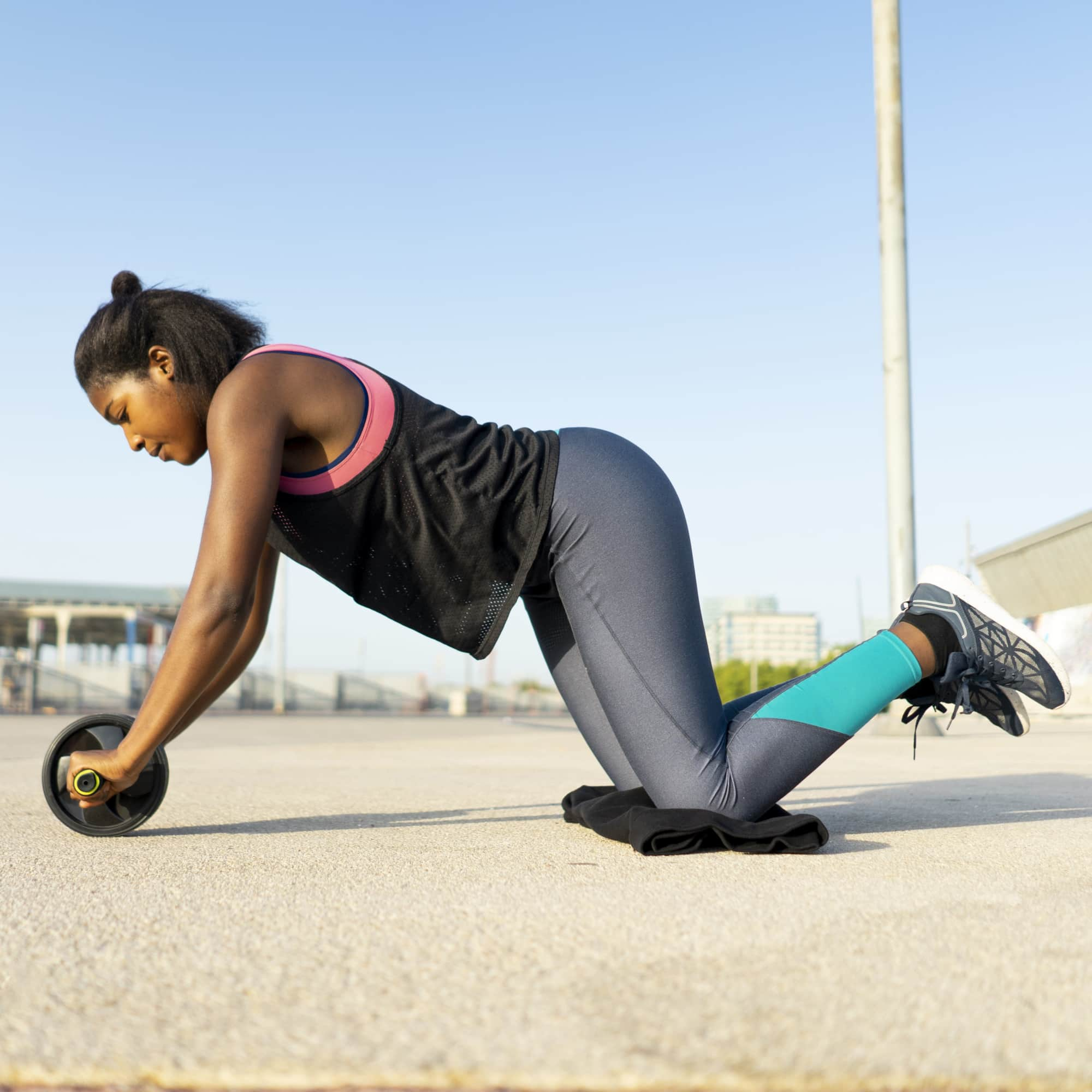
- POPSUGAR Australia
- Fitness
- How to Master the Ab Wheel Without Feeling Back Pain, According to a Personal Trainer
How to Master the Ab Wheel Without Feeling Back Pain, According to a Personal Trainer

Little did I know that one day I’d be social distancing with my ab wheel – a purchase I made years ago but used maybe once.
A brief moment of confidence reconnected me with the tool, and I was quickly reminded of why I neglected it in the first place: multiple shaky reps triggered some lower-back pain.
Instead of deserting all dreams of toning my shoulders, arms, back, and core, I decided to connect with Joey Thurman, an ACE-certified personal trainer. With his help, I hoped to figure out where I was going wrong.
“Basically, you experience pain due to an overactive/shortened muscle or an underactive/lengthened tissue,” Thurman confirms.
By this, he means two things: Either my body isn’t ready to handle the aggressive ab exercise, or I’m not bracing, stabilizing, and flexing my muscles properly throughout the movement.
Thurman points out that extending too far out to where my core can’t support my weight and movement puts excess pressure on my lower back, which causes pain.
To remedy this, Thurman urges that form is more important than your rep count – he even wrote out step-by-step instructions on how to properly use an ab wheel, ahead.
“It’s better to do multiple sets of a few good reps than one long set of crappy reps that could possibly cause muscular imbalances, weakness, and even injury,” Thurman stresses.
Related: Want to Try the Ab Wheel? These 4 Moves Will Challenge Your Balance and Ignite Your Core
- Start on your knees – feel free to use a pad or yoga mat for cushioning.
- Extend your arms out below your chest, placing the ab wheel on the floor. Keep your elbows locked throughout the entire exercise.
- Before the movement begins, tuck your abs and tailbone in and under to create a spinal flexion – maintain this bracing form for the duration of the exercise.
- Slowly start to roll out, keeping the roller in line with the middle of your body. You can up your intensity by rolling slightly to each side to create more tension in the lateral part of your abs.
- At no point should you arch your back or hyperextend your hips.
- Once you extend to a point where you can’t go out further without losing proper form, take a brief pause, then start to roll back by pulling from your abs and not your arms.
- Think about doing a kneeling crunch and flex your abs (as you still should be) to begin the return movement back to your starting point. This is the key to making the movement extremely effective, working your upper-rib muscles for shoulder health and protecting and strengthening your lower back.
- Once you get back to the starting position, repeat the instructions – but remember to not push your limits.
Click here for more health and wellness stories, tips, and news.

